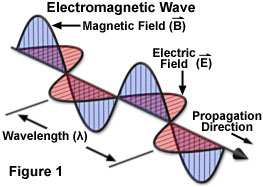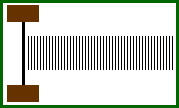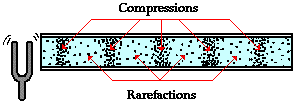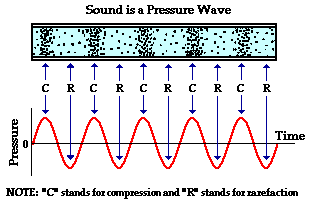Properties of Waves
| Types
of Waves |
In the physical world,
there are two types of waves that we know about. First,
there are electromagnetic waves. These waves are very
special since they propagate theirselves through the
electric and magnetic fields. They don't require a
medium to exist, so they could travel through the vacuum
of space. Every spectra of light, from UV to visible to
radio waves, travel through space in this way.  However, sound does not travel through empty space. Sound requires a medium, such as atoms or molecules, to exist. Any wave that propagates through a medium, like air, is called a physical wave. How these waves travel through space is different, but both types of waves transmit energy through space without displacing mass. The exact method that sound waves propagate, however, is of particular interest to us. Waves can be classified even further between longitudinal and transverse waves. A transverse wave may be polarized, that is, the wave may travel in a single plane. This is more a property of light than of sound. A longitudinal wave is characterized by the motion of the individual particles of a medium being parallel to the wave's propagation. This is best demonstrated by a picture.  This particular image illustrates a vibrating string disturbing the air around it to produce a wave. On the molecular level, the string collides against many particles when it moves to the right.. These particles collide with even more particles so that a wave in the medium occurs. In this wave, there are compressions and rarefactions in the air. They exist because of pressure differences in the medium, so we classify this as a "pressure wave". The dots in the following image represent compressions and rarefactions of molecules of air disturbed by a tuning fork.  If we were to plot the pressure at a given point over a time interval, we would produce a graph somewhat like the following.  Since this is a sine wave, we can begin to work quantitatively with it's frequency, amplitude, and wavelength. These topics are expanded upon further in the section "Sound as a Wave" |